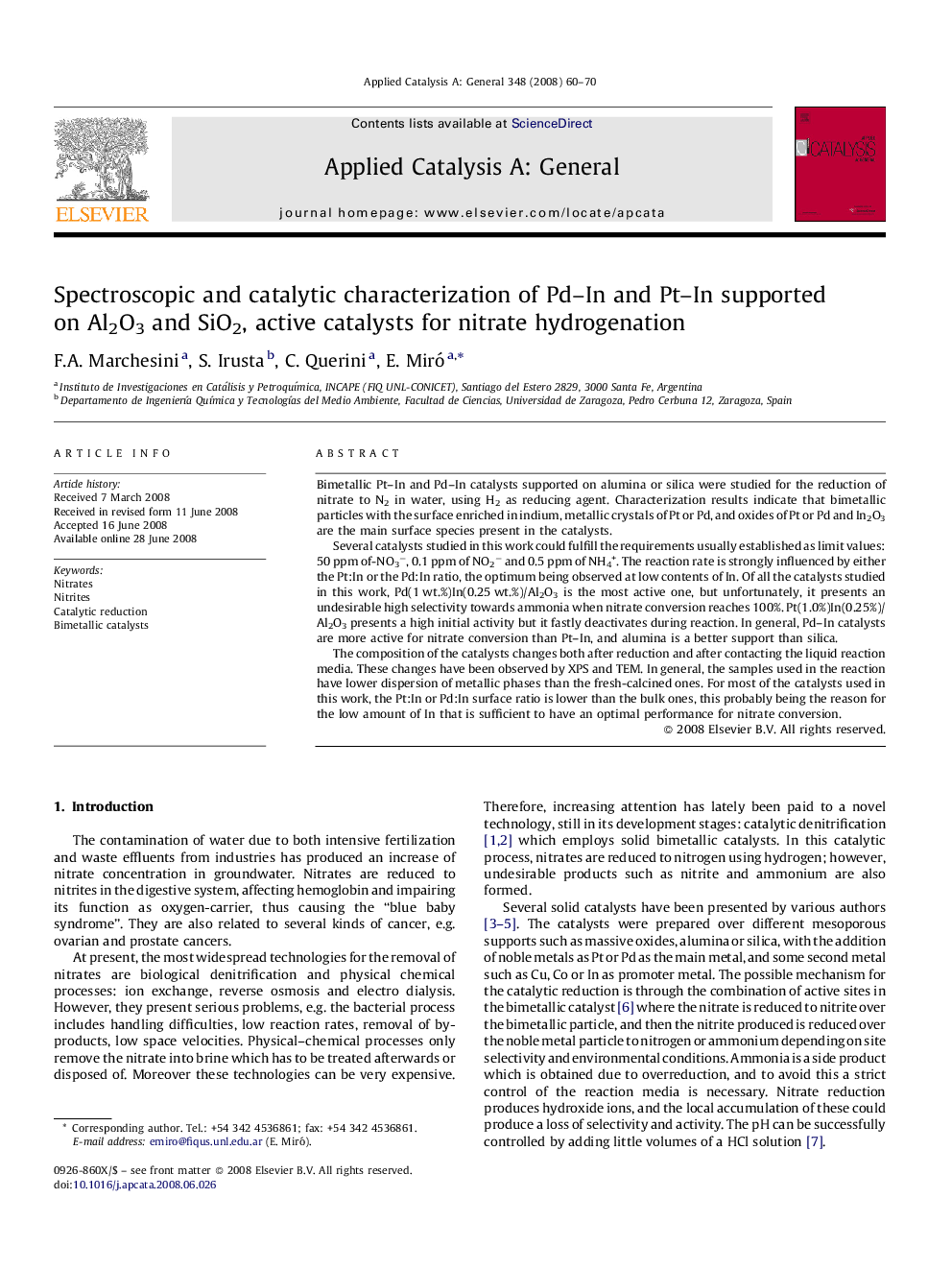| کد مقاله | کد نشریه | سال انتشار | مقاله انگلیسی | نسخه تمام متن |
|---|---|---|---|---|
| 43565 | 45977 | 2008 | 11 صفحه PDF | دانلود رایگان |

Bimetallic Pt–In and Pd–In catalysts supported on alumina or silica were studied for the reduction of nitrate to N2 in water, using H2 as reducing agent. Characterization results indicate that bimetallic particles with the surface enriched in indium, metallic crystals of Pt or Pd, and oxides of Pt or Pd and In2O3 are the main surface species present in the catalysts.Several catalysts studied in this work could fulfill the requirements usually established as limit values: 50 ppm of-NO3−, 0.1 ppm of NO2− and 0.5 ppm of NH4+. The reaction rate is strongly influenced by either the Pt:In or the Pd:In ratio, the optimum being observed at low contents of In. Of all the catalysts studied in this work, Pd(1 wt.%)In(0.25 wt.%)/Al2O3 is the most active one, but unfortunately, it presents an undesirable high selectivity towards ammonia when nitrate conversion reaches 100%. Pt(1.0%)In(0.25%)/Al2O3 presents a high initial activity but it fastly deactivates during reaction. In general, Pd–In catalysts are more active for nitrate conversion than Pt–In, and alumina is a better support than silica.The composition of the catalysts changes both after reduction and after contacting the liquid reaction media. These changes have been observed by XPS and TEM. In general, the samples used in the reaction have lower dispersion of metallic phases than the fresh-calcined ones. For most of the catalysts used in this work, the Pt:In or Pd:In surface ratio is lower than the bulk ones, this probably being the reason for the low amount of In that is sufficient to have an optimal performance for nitrate conversion.
Bimetallic Pt–In and Pd–In catalysts supported on alumina or silica were studied for the reduction of nitrate to N2 in water, using H2 as reducing agent. The reaction rate is strongly influenced by either the Pt:In or the Pd:In ratio, the optimum being observed at low contents of In. Of all the catalysts studied in this work, Pd(1 wt.%)In(0.25 wt.%)/Al2O3 is the most active one.Figure optionsDownload as PowerPoint slide
Journal: Applied Catalysis A: General - Volume 348, Issue 1, 30 September 2008, Pages 60–70